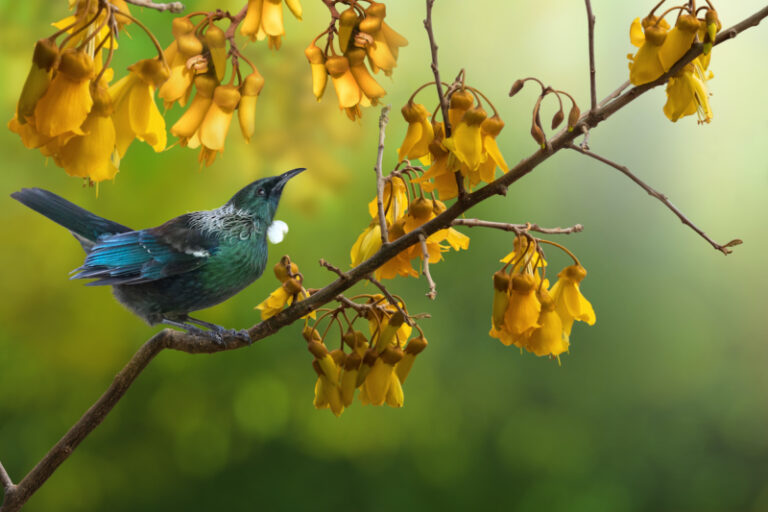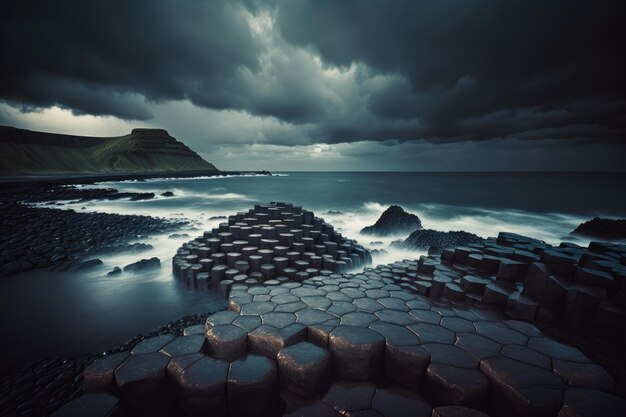Spiritual Meaning of Seeing a Rainbow: Unlocking the Celestial Connection
Rainbows have always fascinated humankind with their mystical beauty and symbolism.
But have you ever wondered about the spiritual meaning of seeing a rainbow?
Let’s explore this divine connection and its profound impact on our lives.
The Divine Bridge Between Worlds
The spiritual meaning of a rainbow is deeply rooted in its role as a bridge between our physical and present selves and our spiritual selves.
Rainbows have long been seen as a sign of a heavenly bridge, connecting our physical world with the celestial one.
This connection entices us to look up, almost as if in prayer, and invites us to let go of our worldly fears and troubles to embrace spiritual guidance.
Symbolism Across Cultures and Beliefs
Rainbows hold a high pedestal in various cultures and mythologies, and their spiritual significance has transcended time and space.
Here are some common interpretations of rainbow symbolism from different perspectives:
Good Luck and Prosperity
Many cultures associate rainbows with good luck, prosperity, and fertility.
Celtic folklore, for instance, links rainbows with gold, as leprechauns are said to hide a pot of gold at the end of the rainbow.
This pot of gold is considered a gift of good luck, symbolizing new life, second chances, or even a successful pregnancy.
Hope and New Beginnings
Rainbows often appear after a storm, symbolizing hope and new beginnings.
The vibrant colors amidst the dark clouds remind us that something good can always come out of a challenging situation.
Peace and Conflict Resolution
The phrase “there’s a rainbow after the rain” suggests peace after a period of turmoil.
When a rainbow appears, it symbolizes the end of conflict and the return of order.
Seeing a rainbow reminds you that it’s never too late to find peace and resolution if you have been struggling with someone.
Death and Transition to the Spiritual Realm
In some cultures, rainbows represent death and the transition to the spiritual realm.
They are seen as bridges to the afterlife, guiding fallen soldiers or departed souls out of the physical world.
Connection to Heaven and the Divine
The rainbow’s role as a connector between the earthly and spiritual realms is a common theme in various faiths and cultures.
From God’s promise to Noah in the Bible to the Bifrost bridge in Norse mythology, rainbows have often been depicted as a link between the human experience and the divine.
Symbol of Light and Enlightenment
Rainbows can only be seen when there is light, making them a symbol of illumination and enlightenment.
In Buddhism, the rainbow body represents the transitional state before achieving Nirvana and becoming pure light.
This transformation occurs when a person realizes the attributes associated with each color of the rainbow and attains the highest form of meditation.
The Number Seven and Its Significance
The seven colors of the rainbow hold a special significance, representing concepts like the seven chakras in Eastern spirituality or the union between the heavens (3) and the earth (4).
This connection to the number seven is often seen as a powerful symbol in various spiritual traditions.
Rainbows in World Religions
Christianity
In Christianity, rainbows hold a strong spiritual meaning rooted in the biblical story of Noah’s Ark.
After the great flood, God created a rainbow as a sign of his covenant with humanity, promising never to destroy the earth with a flood again.
This symbolizes God’s promise, mercy, and faithfulness to His word.
Buddhism
In Tibetan tantric Buddhism, the focus is on the colors of the rainbow rather than its shape.
Before achieving Nirvana, a person must attain the attributes associated with each color of the rainbow body.
The body is then said to transform into pure light upon the person’s death, signifying enlightenment and freedom from rebirth.
Rainbows in Different Cultures
Rainbows have been recognized and celebrated worldwide, with various cultures sharing similar spiritual connections.
Norse Mythology
In Norse mythology, the rainbow is believed to be Bifrost, a bridge from Earth to Asgard, the home of the gods.
Heimdall, the watchman, guards this bridge, emphasizing the rainbow’s role as a gateway to another world.
Celtic Mythology
Celtic druids viewed the rainbow as a symbol of feminine powers, referring to it as the curve of the sky or kambonemos.
The curve is associated with femininity due to its resemblance to a pregnant belly, making rainbows a symbol of prosperity and fertility.
Greek Mythology
In ancient Greece, the goddess Iris personified the rainbow.
With her golden wings, she connected the sea and the sky, and the rainbow was seen as the path she took between worlds.
This connection is often considered a marriage between heaven and earth, highlighting the rainbow’s spiritual significance.
Native American Culture
In Navajo culture, the rainbow symbolizes the unity of various Navajo tribes into one rainbow nation.
The jagged shapes in their rainbow representation signify the mountains, while a copper outline denotes the dividing borders.
Chinese Culture
Chinese mythology associates the rainbow with a double-headed dragon that serves as a mediator between heaven and earth.
One head listens to prayers from the earth and relays them to the other head, which points towards heaven.
This myth aligns with the general symbolism of rainbows as symbols of hope and faith.
Japanese Culture
In Japanese mythology, the rainbow is a celestial bridge that allowed divine ancestors to descend from heaven to earth and create land from troubled waters.
This association with creation and fertility is prevalent in Japanese literature and culture.
Australian Aboriginal Culture
An Australian Aboriginal myth speaks of a rainbow serpent representing seasonal shifts and humans’ reliance on water.
The serpent is said to dwell within bodies of water, guarding this vital resource.
LGBTQIA+ Rainbow Symbolism
Rainbows have become a symbol of LGBTQIA+ pride and solidarity due to the rainbow flag, designed by Gilbert Baker in 1978.
The flag, first flown in the San Francisco Gay Freedom Day Parade, has become a widely recognized symbol of the LGBTQIA+ community.
It represents hope, inclusivity, and diversity within the community.
Interpreting Rainbow Dreams
According to Migene Gonzalez-Wippler’s book, Dreams and What They Mean, the rainbow is a type of “uncommon dream.
These larger-than-life dreams tend to occur at key moments and can be seen as a blessing.
A rainbow dream signifies good fortune and reminds us to be aware of unexpected opportunities.
The Spiritual Meaning of Seeing a Rainbow: A Summary
| Culture/Religion | Rainbow Symbolism |
|---|---|
| Christianity | Promise, mercy, and faithfulness |
| Buddhism | Enlightenment and transformation |
| Norse Mythology | Gateway to the realm of the gods |
| Celtic Mythology | Feminine powers, prosperity, and fertility |
| Greek Mythology | Connection between heaven and earth |
| Native American | Unity and harmony |
| Chinese Culture | Hope, faith, and mediation between realms |
| Japanese Culture | Creation and fertility |
| Australian Aboriginal | Seasonal shifts and human reliance on water |
| LGBTQIA+ | Pride, inclusivity, and diversity |
Seeing a rainbow brings positivity, hope, and a reminder of the goodness ahead.
Rainbows may appear unpredictable, but their presence often coincides with our need for their message.
When a rainbow appears, it’s an opportunity to assess our inner well-being and embrace the hope of new beginnings and unexpected blessings.







